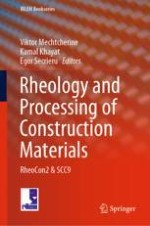2020 | OriginalPaper | Buchkapitel
Comparative Study on the Effect of Mixer Type on Properties of Self-compacting Mortar
verfasst von : Bart Craeye, Wim Bastiaens, Erik Coppens, Dirk Van Houdt, Wilfried Gijbels, Thomas Rondou
Erschienen in: Rheology and Processing of Construction Materials
Aktivieren Sie unsere intelligente Suche, um passende Fachinhalte oder Patente zu finden.
Wählen Sie Textabschnitte aus um mit Künstlicher Intelligenz passenden Patente zu finden. powered by
Markieren Sie Textabschnitte, um KI-gestützt weitere passende Inhalte zu finden. powered by
